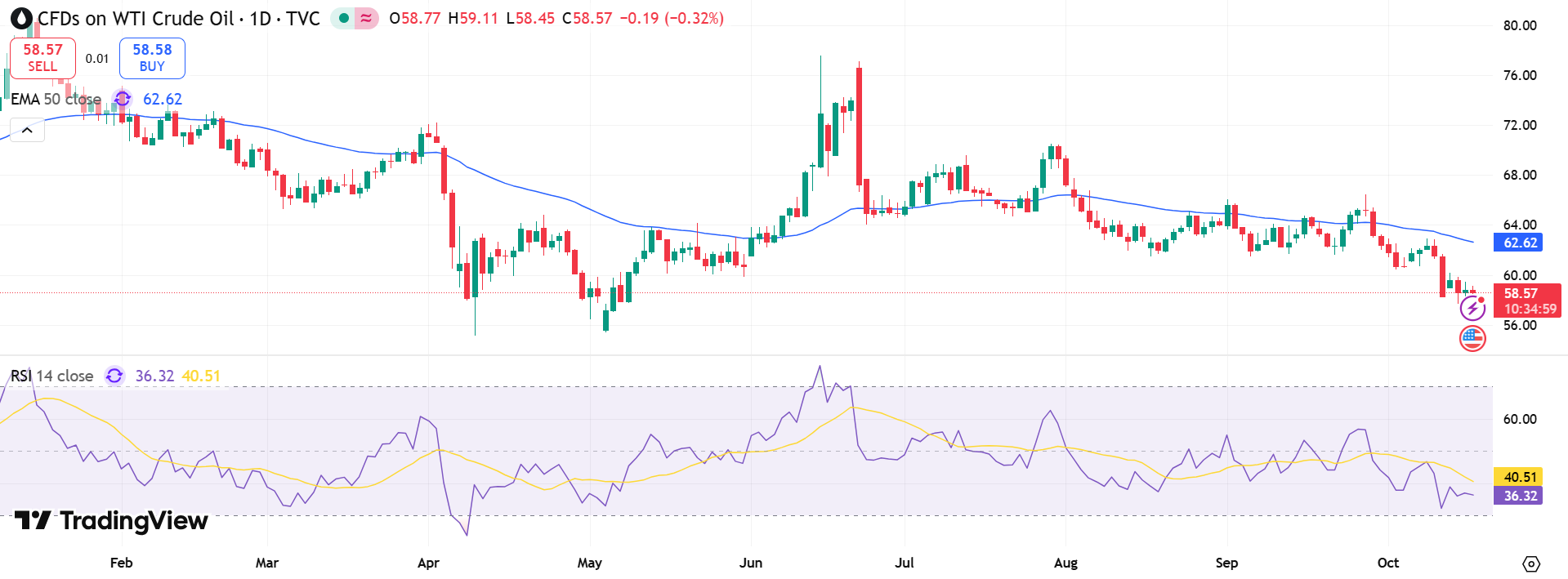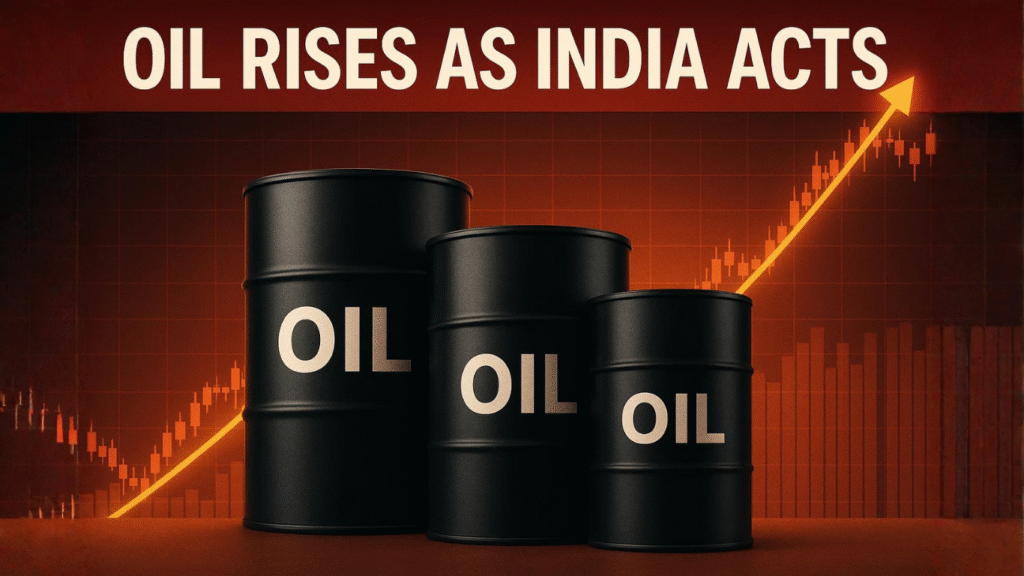Oil prices gained nearly 1% on Thursday after U.S. President Donald Trump said that India had agreed to stop buying Russian oil, a move that could reshape global crude trade flows and tighten supply in other regions.
By 04:30 GMT, Brent crude futures were up 0.87% at $62.45 per barrel, while U.S. West Texas Intermediate (WTI) gained 0.98% to $58.84. The rebound followed steep losses earlier in the week, when concerns over U.S.-China trade tensions and a warning from the International Energy Agency (IEA) about a potential supply glut in 2026 weighed on sentiment.
India currently sources about one-third of its oil imports from Russia, making Trump’s announcement a potentially significant supply shift for global markets.
Geopolitics and Sanctions Drive Market Sentiment
Trump’s remarks came as Washington ramps up efforts to cut off Moscow’s energy revenues and push for a peace deal in Ukraine. He said that after securing India’s cooperation, the U.S. would next seek a similar commitment from China, the largest buyer of Russian seaborne crude.
The Indian embassy in Washington did not immediately confirm Trump’s claims, but several Indian refiners are reportedly preparing for a gradual reduction in Russian imports, according to sources cited by Reuters.
U.S. Treasury Secretary Scott Bessent also told Japanese officials that Washington expects Tokyo to follow suit in reducing its Russian energy purchases.
Key developments influencing market mood include:
- New UK sanctions targeting Rosneft and Lukoil, Russia’s top energy firms.
- Measures on 44 oil tankers, four export terminals, and Nayara Energy, a Russian-linked refinery in India.
- China’s Shandong Yulong Petrochemical added to the U.K.’s sanctions list.
These moves highlight escalating Western efforts to choke off Russia’s energy trade, adding further support to oil prices.
U.S. Inventory Build Caps Gains

Despite the geopolitical lift, gains were tempered by signs of rising U.S. crude inventories. Data from the American Petroleum Institute (API) showed a 7.36 million-barrel build in crude stocks for the week ending October 10, while gasoline inventories rose by 2.99 million barrels.
In contrast, distillate inventories—a key measure of diesel demand—fell by 4.79 million barrels, signaling stronger industrial consumption. Traders now await the Energy Information Administration (EIA) report for confirmation.
Analysts expect a modest 0.3 million-barrel increase in U.S. crude stockpiles, suggesting that domestic demand remains sluggish even as global tensions boost headline prices.


